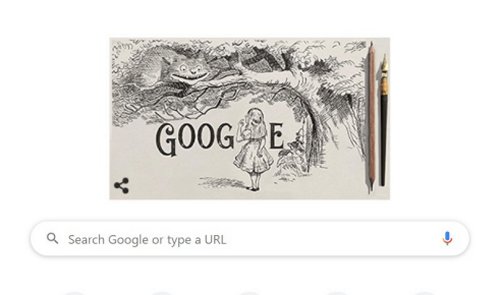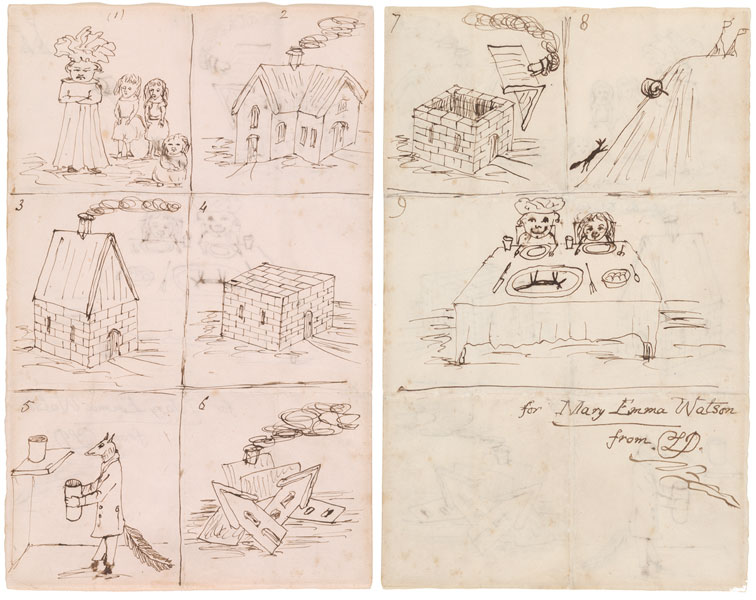28 February 2020

Today Google's Doodle features John Tenniel, who did the famous original illustrations for the Alice books. Tenniel, who became the principal political cartoonist of "PUNCH" magazine, was born on the 28 February 1820. He seems to have been a quiet, retiring and somewhat introverted man - long suffering, too, if an anecdote about his youth is to be believed. It seems that his father was a dancing and fencing master, who taught his son to fence. When he was 20, Tenniel was fencing with his father when his father accidently hit his eye with the tip of his foil. Tenniel never told his father that his eyesight had been permanently damaged by the accident, because he did not want to upset him.
He indicated that he found it a strain to work with Lewis Carroll because Carroll was so demanding. In fact, after illustrating "Wonderland" Tenniel actually refused to illustrate "Looking Glass," to Carroll's dismay... I wonder how Carroll persuaded him to change his mind.
04 February 2020

I've always thought that Lewis Carroll was essentially a story-teller rather than a writer. All the evidence suggests that his best work was done for an audience, real or imaginary. He wrote both "Alice" books when he felt exceptionally lonely, sad and stressed. They evoke happier times when he had expressed his thoughts and ideas to a sympathetic audience who loved him undemandingly and understood what he was trying to say.
Although he had many good male friends and was close to many male relatives, he seems to have valued the company of women and girls rather more than the company of boys and men. The social customs at the time made it difficult for him to become close to women as a young man, but once he reached late middle age he spent most of his spare time with women. He suffered from bouts of severe depression, and his treasured collection of little girl friends late in life, (which was considered really amusing by some who knew him) was recognised by his family as one of the ways he coped with the depression. Their visits and letters indicated that they loved and genuinely wanted his company.
The modern idea of "empowerment" of women and girls was long in the future in the 1860s and 1870s. But one reason that so many girls liked (and still like) "Alice" was because Carroll portrayed this seven year old girl with such personal respect. This was at a time when adult women were considered frail, weak, hysterical, and not capable of running their own affairs- and children were seen as creatures to be socially trained and their opinions and feelings were generally completely disregarded. Alice, though only 7, was strong, determined and had the confidence of youth, aiming to deal sensibly with whatever was thrown at her, even when she was scared, baffled and worried. A similar empowering approach is shown in this story Carroll told to little Mary Watson in 1871, (the same year as he wrote "Looking Glass.") In this new take on the "Three Little Pigs," Mary, though very young, calmly plans how to outwit the evil and frightening fox. It's fortunate that Mary Watson saved the pictures which he sketched to accompany his story. They are shown above and the text is here.
